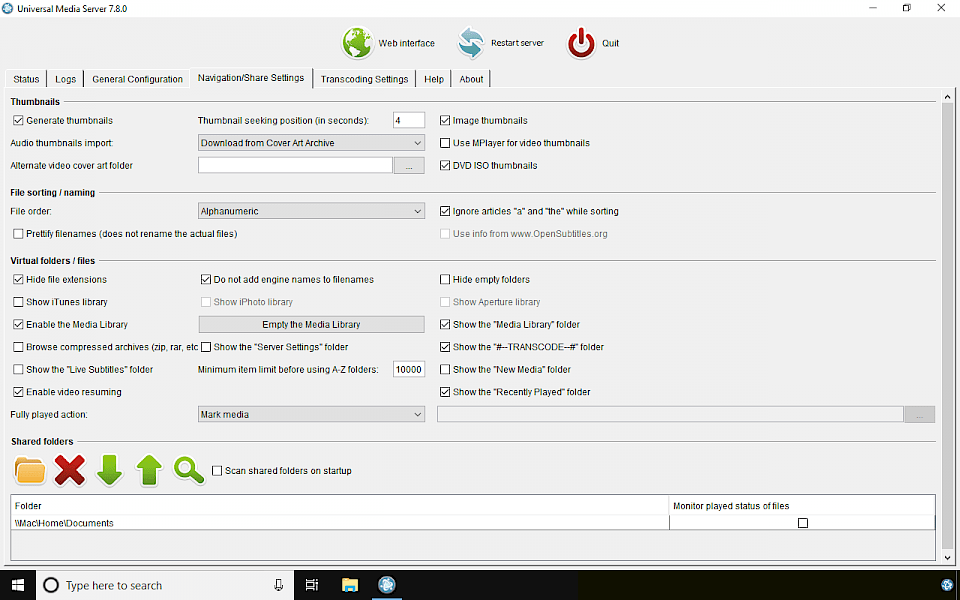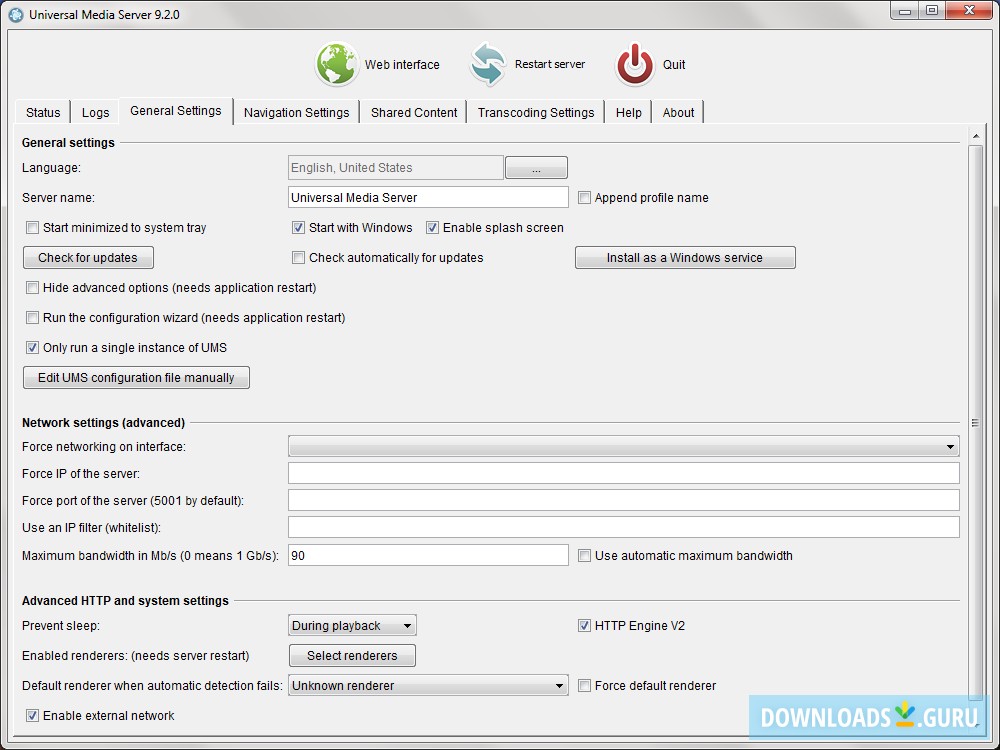
You are able to control the quality settings of MPEG2 encoding which corresponds to needed network bandwidth.
#UNIVERSAL MEDIA SERVER 720P#
You will need a 100MBit/s LAN or DLAN for playback of transcoded HD videos - WLAN won't work (maybe some 720p videos will do). This also will increase the network traffic because MPEG2 compression is not very good for HD videos. If UMS is not able to stream directly or mux the audio/video to a PS3 compatible container it will transcode to MPEG2, which is PS3 compatible. You may have to enforce transcoding by choosing another transcoding engine. You should also note that this setting won't affect muxed videos. If that is not a problem you will get really poor video quality when stream HD videos on low network bandwidth. You need lots of CPU power for transcoding. Experience shows that it does not work as expected. One may think it is a brilliant idea to reduce network bandwidth in order to get HD videos streaming via WLAN. If you do not need subtitles enable this feature. Very useful when your renderer, like many Samsung, doesn't support the searches in transcoded media.


This tab also allows to set the details of transcoding for each program. If it cannot transcode the media, the next program on the list is used, and so on. The topmost program is most likely to be used.

#UNIVERSAL MEDIA SERVER HOW TO#
On this tab you can specify which order of preference the programs have when UMS determines how to transcode media.įor each media type there is a list of programs, sorted by preference. Some of these programs overlap in what kind of media they can transcode. UMS uses external programs to transcode and stream content to your device. The Transcoding settings tab allows you to specify how content will be transcoded.


 0 kommentar(er)
0 kommentar(er)
